Abstract
The evolution of the A family of chorion genes was examined by comparing new protein and DNA sequences from the silkmoths Antheraea pernyi and Bombyx mori with previously known sequences from Antheraea polyphemus. The comparisons indicated that the A family and its major subfamilies are ancient and revealed how parts of the genes corresponding to distinct regions of the protein structure have evolved, both by base substitutions and by segmental reduplications and deletions.
Full text
PDF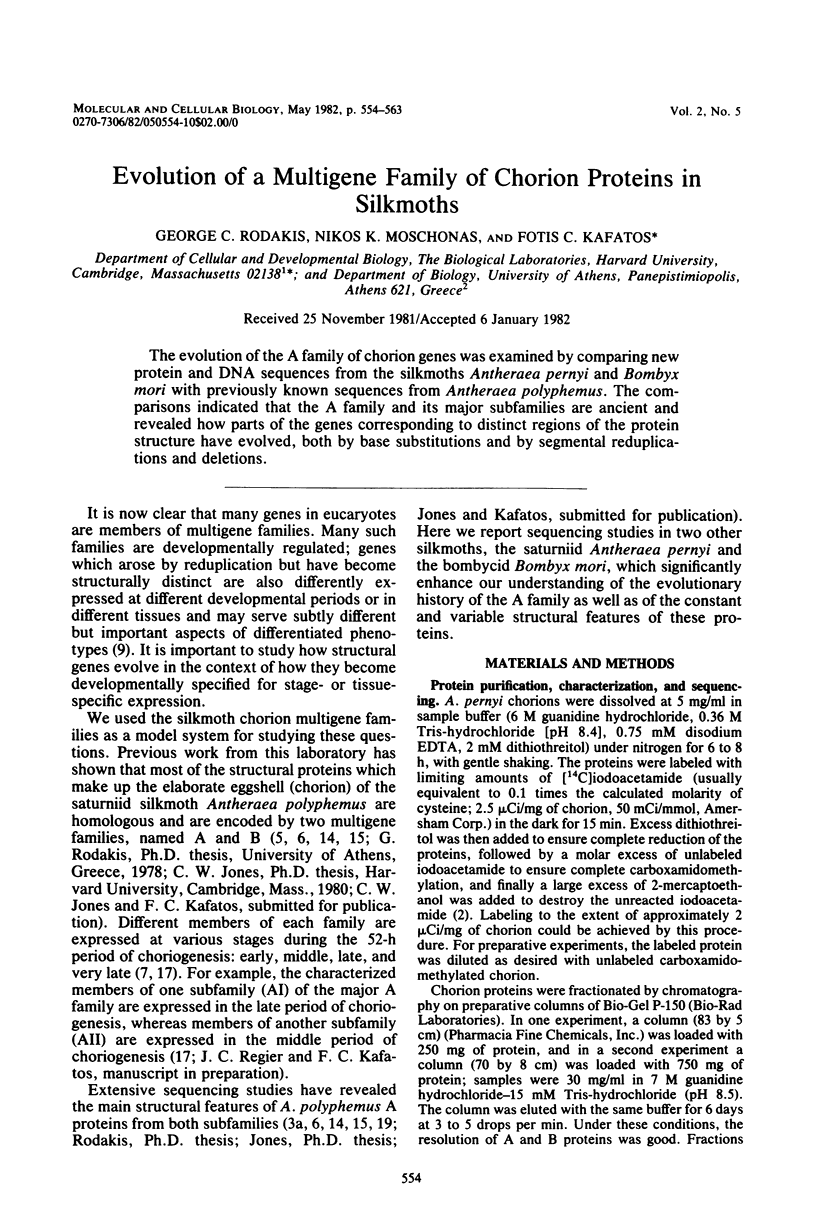
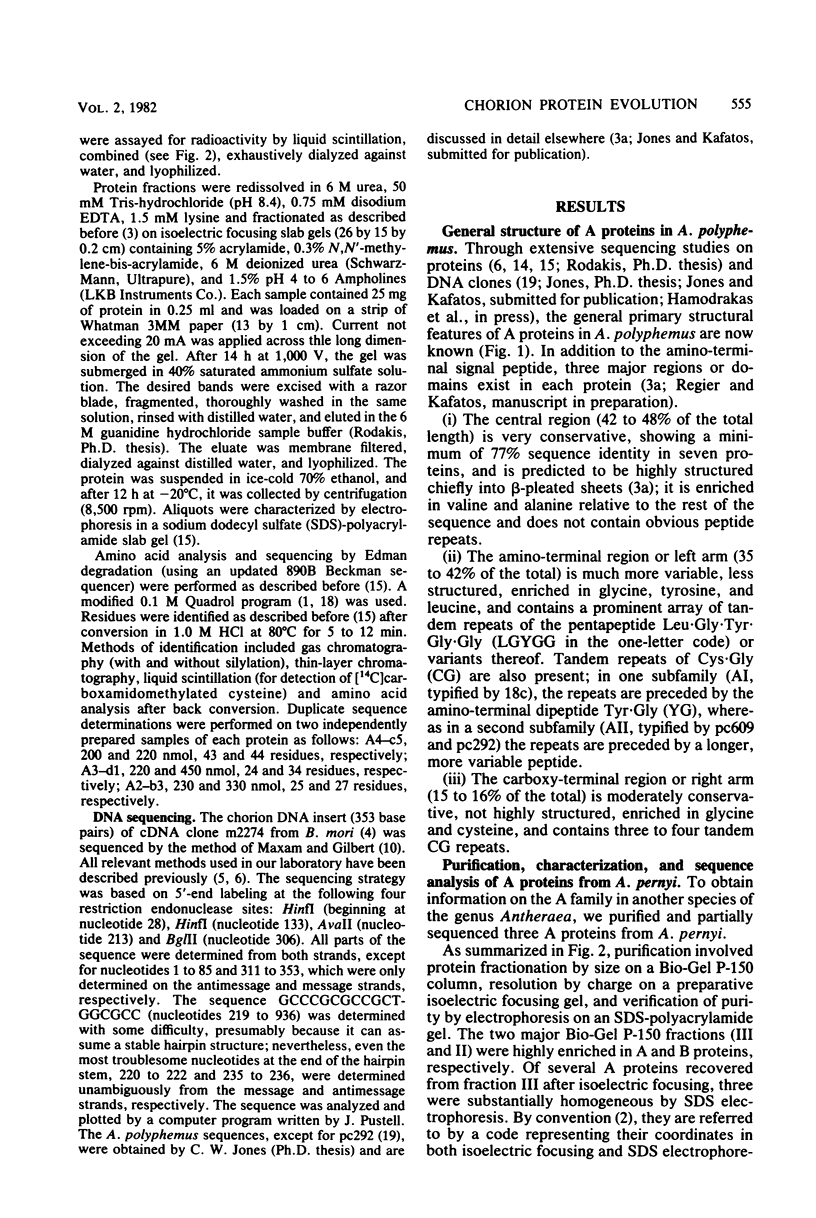
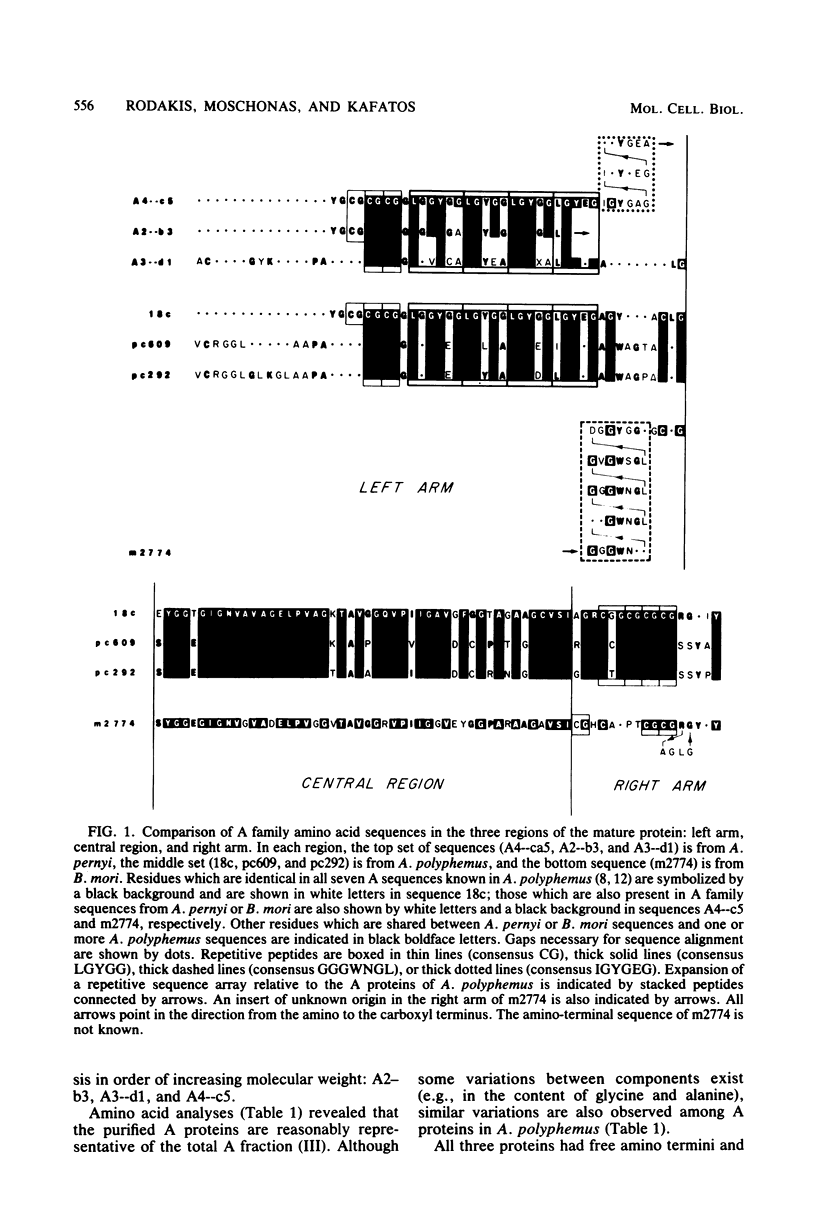
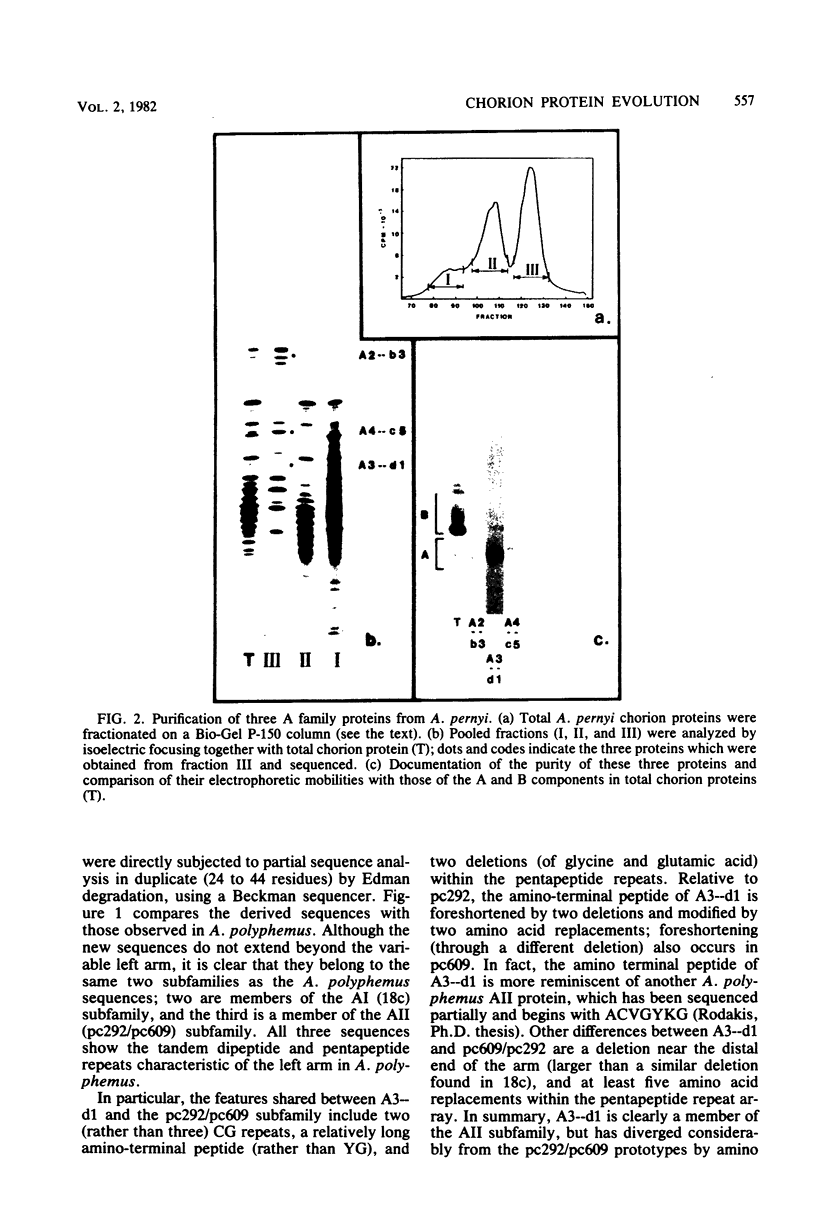
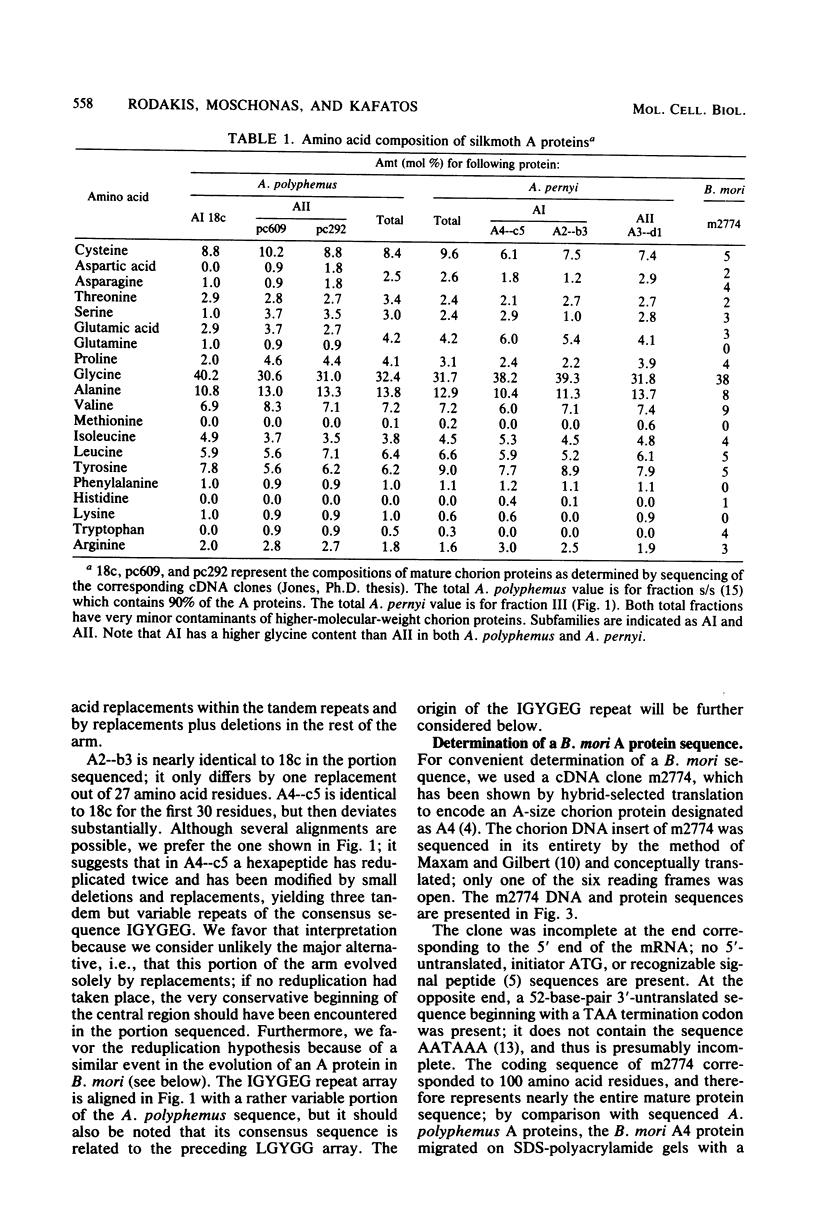
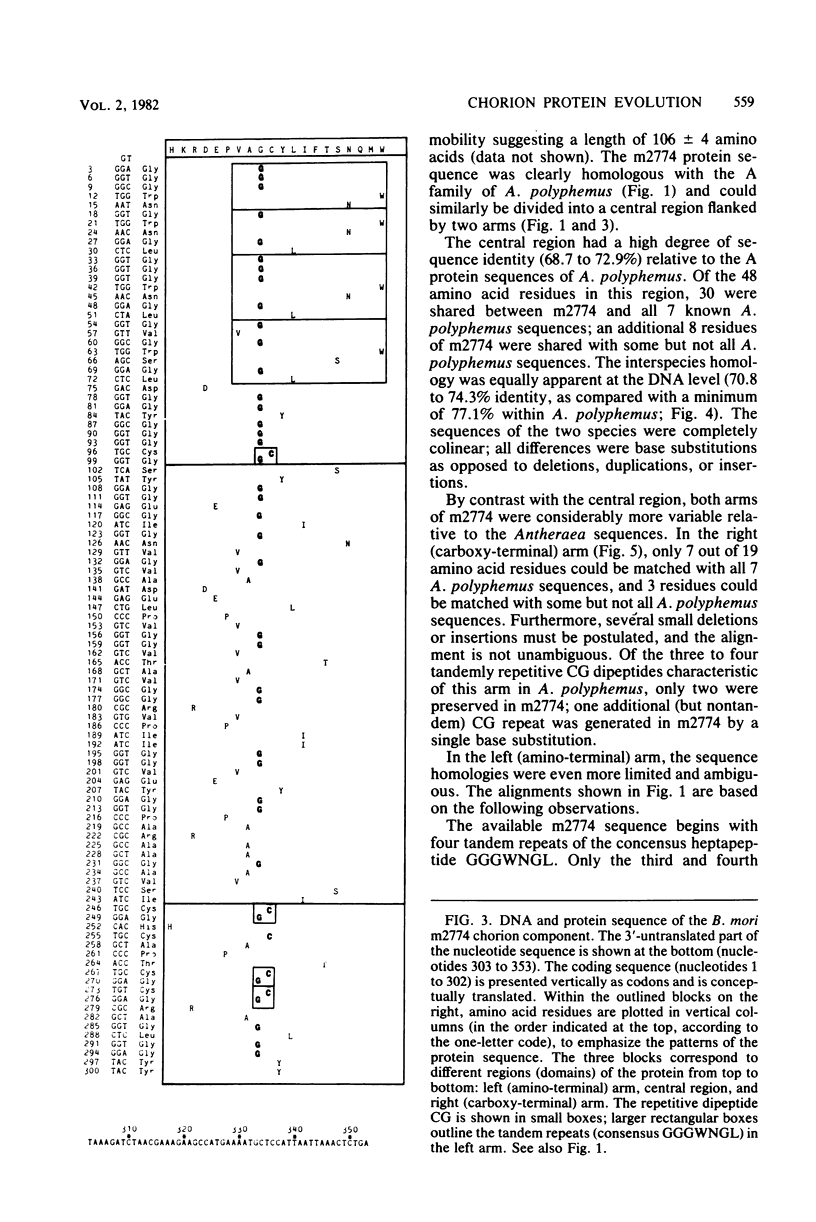
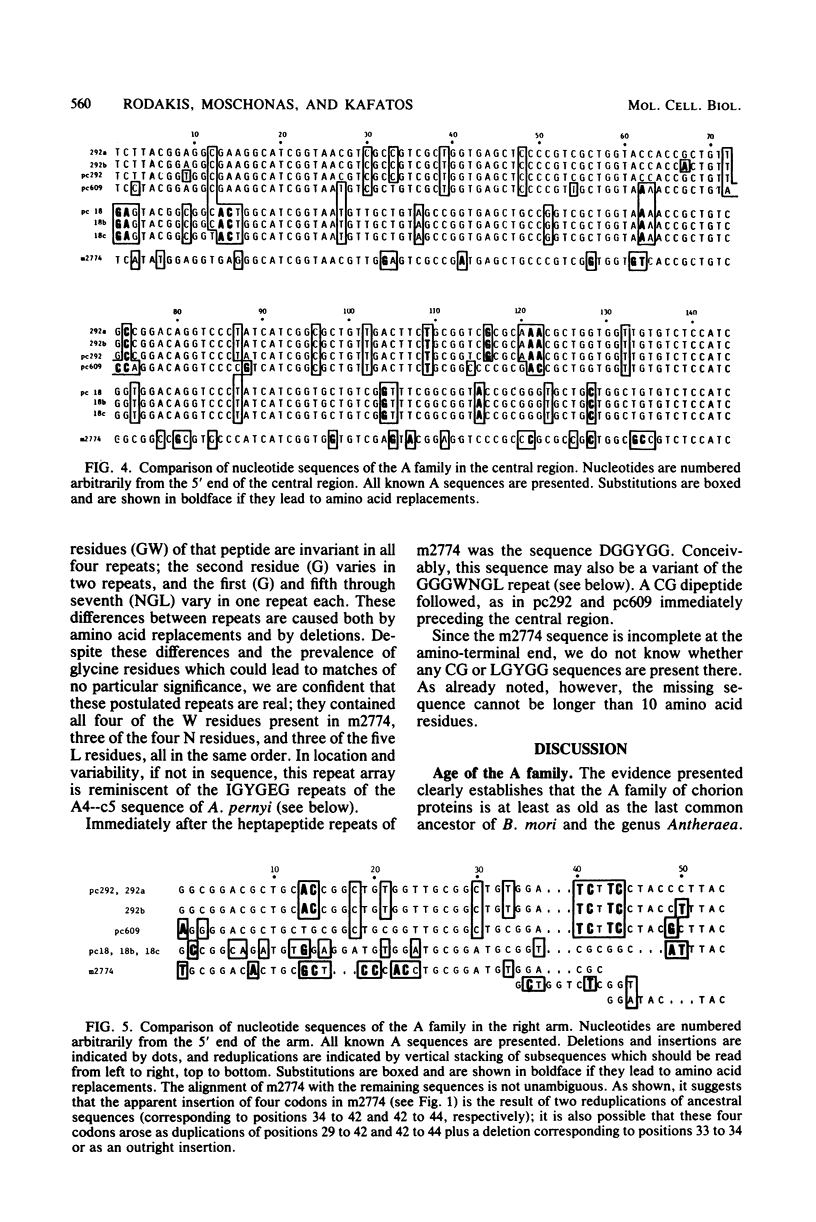
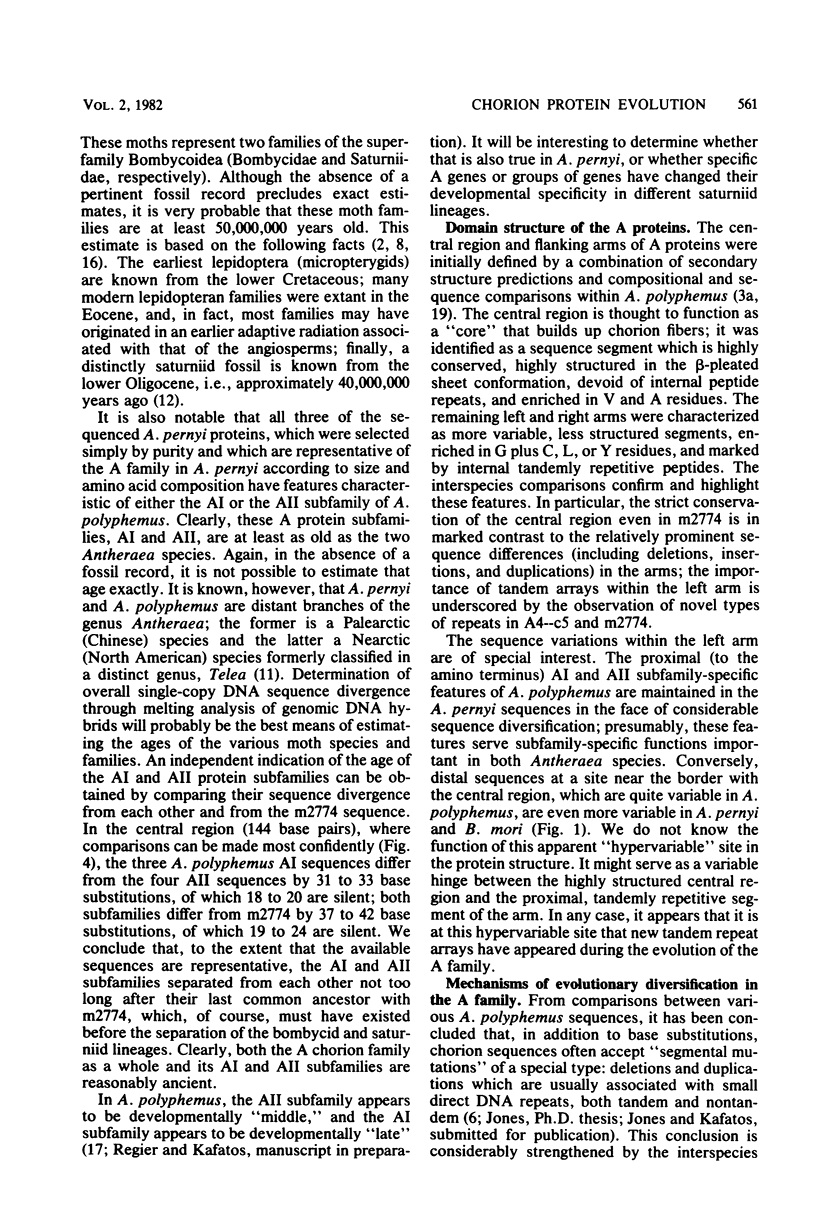
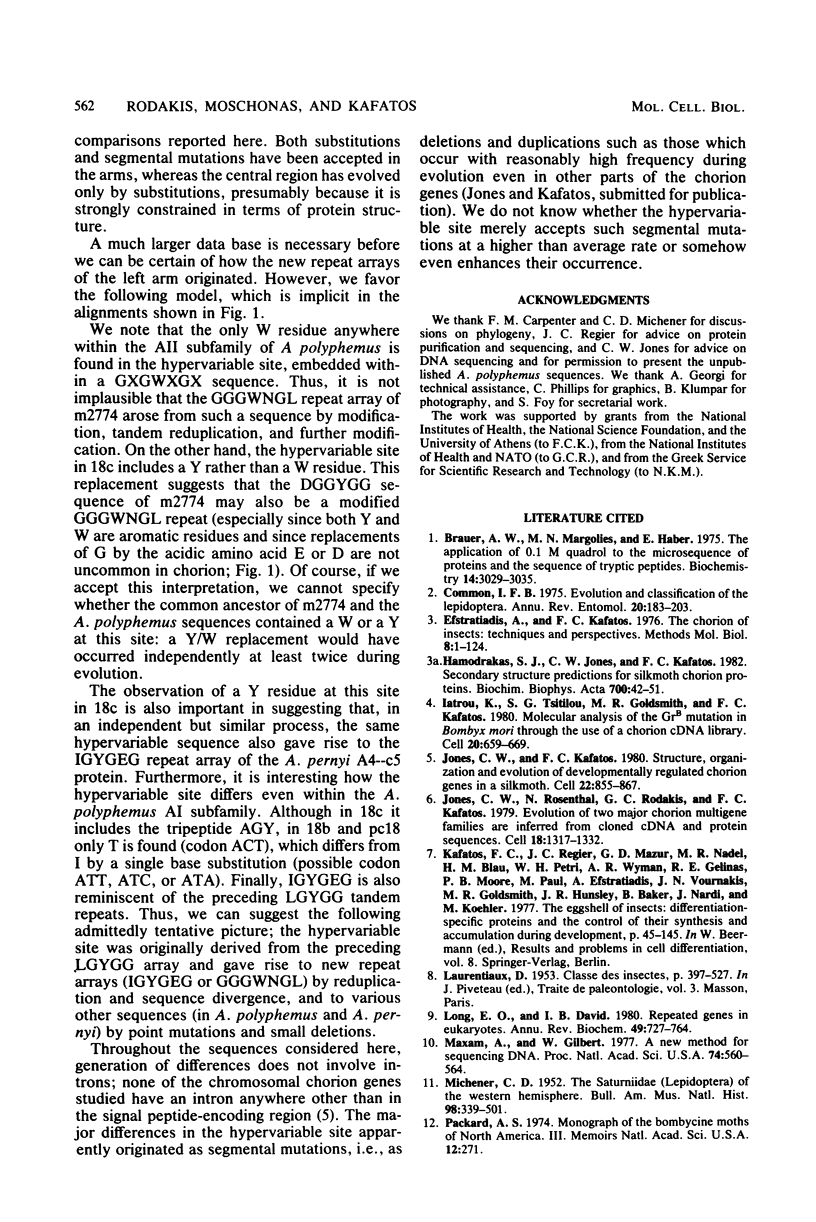
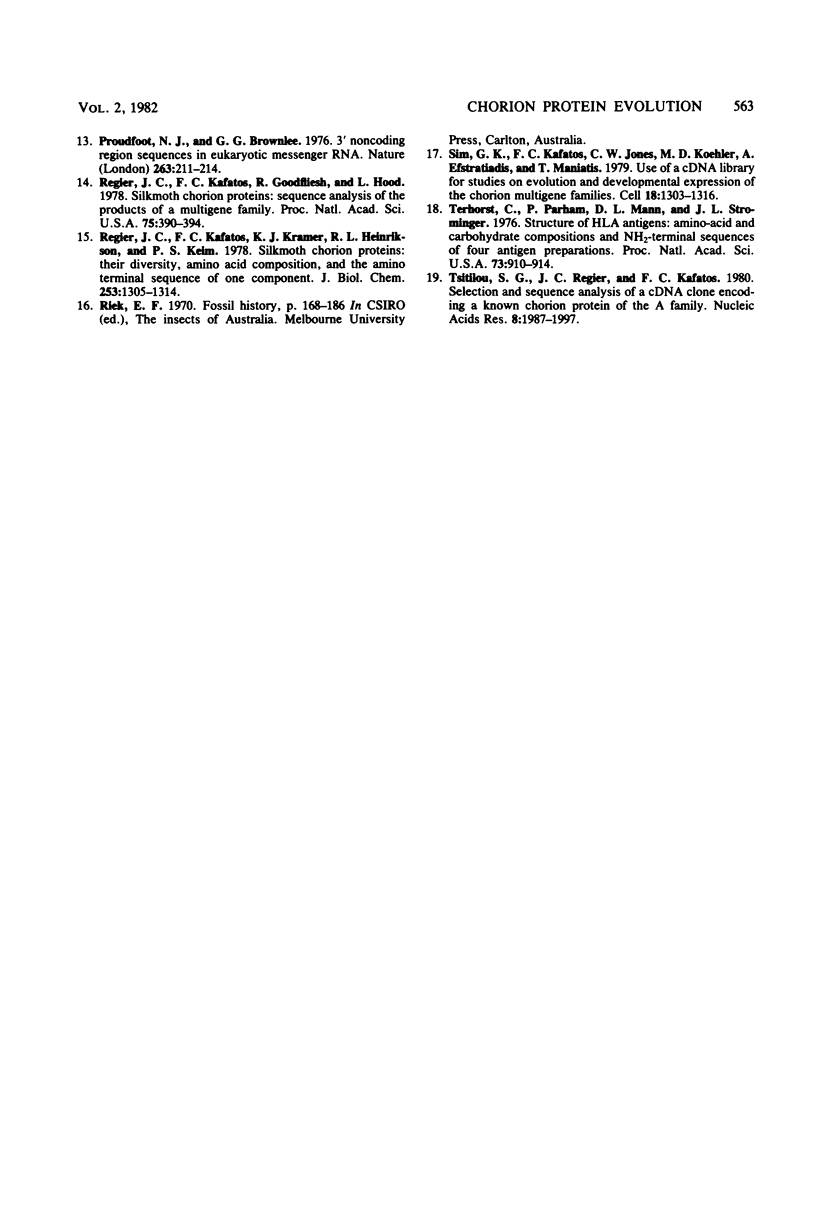
Images in this article
Selected References
These references are in PubMed. This may not be the complete list of references from this article.
- Brauer A. W., Margolies M. N., Haber E. The application of 0.1 M quadrol to the microsequence of proteins and the sequence of tryptic peptides. Biochemistry. 1975 Jul;14(13):3029–3035. doi: 10.1021/bi00684a036. [DOI] [PubMed] [Google Scholar]
- Iatrou K., Tsitilou S. G., Goldsmith M. R., Kafatos F. C. Molecular analysis of the GrB mutation in Bombyx mori through the use of chorion cDNA library. Cell. 1980 Jul;20(3):659–669. doi: 10.1016/0092-8674(80)90312-8. [DOI] [PubMed] [Google Scholar]
- Jones C. W., Kafatos F. C. Structure, organization and evolution of developmentally regulated chorion genes in a silkmoth. Cell. 1980 Dec;22(3):855–867. doi: 10.1016/0092-8674(80)90562-0. [DOI] [PubMed] [Google Scholar]
- Jones C. W., Rosenthal N., Rodakis G. C., Kafatos F. C. Evolution of two major chorion multigene families as inferred from cloned cDNA and protein sequences. Cell. 1979 Dec;18(4):1317–1332. doi: 10.1016/0092-8674(79)90242-3. [DOI] [PubMed] [Google Scholar]
- Kafatos F. C., Regier J. C., Mazur G. D., Nadel M. R., Blau H. M., Petri W. H., Wyman A. R., Gelinas R. E., Moore P. B., Paul M. The eggshell of insects: differentiation-specific proteins and the control of their synthesis and accumulation during development. Results Probl Cell Differ. 1977;8:45–145. doi: 10.1007/978-3-540-37332-2_2. [DOI] [PubMed] [Google Scholar]
- Long E. O., Dawid I. B. Repeated genes in eukaryotes. Annu Rev Biochem. 1980;49:727–764. doi: 10.1146/annurev.bi.49.070180.003455. [DOI] [PubMed] [Google Scholar]
- Maxam A. M., Gilbert W. A new method for sequencing DNA. Proc Natl Acad Sci U S A. 1977 Feb;74(2):560–564. doi: 10.1073/pnas.74.2.560. [DOI] [PMC free article] [PubMed] [Google Scholar]
- Proudfoot N. J., Brownlee G. G. 3' non-coding region sequences in eukaryotic messenger RNA. Nature. 1976 Sep 16;263(5574):211–214. doi: 10.1038/263211a0. [DOI] [PubMed] [Google Scholar]
- Regier J. C., Kafatos F. C., Goodfliesh R., Hood L. Silkmoth chorion proteins: sequence analysis of the products of a multigene family. Proc Natl Acad Sci U S A. 1978 Jan;75(1):390–394. doi: 10.1073/pnas.75.1.390. [DOI] [PMC free article] [PubMed] [Google Scholar]
- Regier J. C., Kafatos F. C., Kramer K. J., Heinrikson R. L., Keim P. S. Silkmoth chorion proteins. Their diversity, amino acid composition, and the NH-terminal sequence of one component. J Biol Chem. 1978 Feb 25;253(4):1305–1314. [PubMed] [Google Scholar]
- Sim G. K., Kafatos F. C., Jones C. W., Koehler M. D., Efstratiadis A., Maniatis T. Use of a cDNA library for studies on evolution and developmental expression of the chorion multigene families. Cell. 1979 Dec;18(4):1303–1316. doi: 10.1016/0092-8674(79)90241-1. [DOI] [PubMed] [Google Scholar]
- Terhorst C., Parham P., Mann D. L., Strominger J. L. Structure of HLA antigens: amino-acid and carbohydrate compositions and NH2-terminal sequences of four antigen preparations. Proc Natl Acad Sci U S A. 1976 Mar;73(3):910–914. doi: 10.1073/pnas.73.3.910. [DOI] [PMC free article] [PubMed] [Google Scholar]
- Tsitilou S. G., Regier J. C., Kafatos F. C. Selection and sequence analysis of a cDNA clone encoding a known chorion protein of the A family. Nucleic Acids Res. 1980 May 10;8(9):1987–1997. doi: 10.1093/nar/8.9.1987. [DOI] [PMC free article] [PubMed] [Google Scholar]



